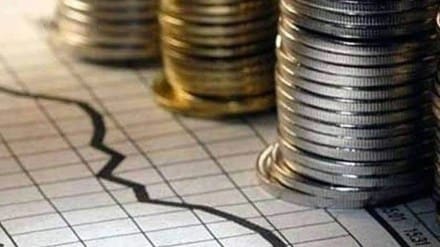The 6.1% growth in the headline gross domestic product (GDP) for the March quarter is impressive and reflects the resilience of the Indian economy at a time when the global environment has been unfriendly. However, the performance has been uneven—while the services and manufacturing sectors have lifted the numbers, consumption continues to be a huge disappointment. The good gross value added (GVA) growth of 6.5% year-on-year has been driven by strong tax collections and a smaller subsidy bill. To be sure, growth was helped by the significantly smaller drag on net trade of just over Rs 6,200 crore, less than a tenth of nearly Rs 66,000 crore in Q4FY22; this added about 1.4 percentage points to the GDP. While the strong services exports is heartening and should continue, a falling import bill would mean manufacturing activity might not gain the kind of momentum one would want. The good show put up by the agriculture sector, which grew 5.5% y-o-y suggests that unseasonal rains do not seem to have hurt the rural economy as much as was feared. That is good news.
The government has done well to spend on capital expenditure at a time when the private sector’s contribution is not picking up meaningfully, with the gross fixed capital formation (GFCF) rising by nearly 9% y-o-y. The high multiplier impact of capex should help the economy. Manufacturing too has done well in Q4, having grown at 4.5%, although this is off a very weak base, of a mere 0.6% growth in the same period of the previous fiscal. In fact, the segment recorded negative growth both in Q3 and Q2FY23. The softening of input prices has clearly boosted margins, so it remains to be seen how the sector will fare once the base effect fades. The biggest disappointment has been consumption, which accounts for close to 60% of the economy; the private final consumption expenditure (PFCE) grew at an anaemic 2.8% in the March quarter and that too on a modest base of 4.7% y-o-y in Q4FY22.
The muted consumption is at odds with the strong growth seen in the trade, hotels, transport and communication segment, which clocked a 9.1% y-o-y increase. It also doesn’t tie in with the confidence reflected in the Reserve Bank of India’s consumer survey. Corporate commentary suggests that while rural demand is picking up, it is yet to bounce back to levels seen before the pandemic. This is not surprising given that real rural wages have been negative for close to a year. Urban demand, too, has been patchy. Consequently, the RBI must refrain from any rate hikes since the impact of the tightening will play out with a lag of several quarters.
The fact is that the government last year enjoyed a cushion in the form of higher nominal GDP growth and very buoyant tax collections. And while one concedes expenses on fertiliser subsidies overshot the budget, the spends were small as seen in the increase in the government final consumption expenditure of 2.3% y-o-y in Q4. In the absence of a high nominal GDP, the government is unlikely to be able to step up spending on this front this year. The 7.2% GDP growth in FY23, however, will likely give way to a much weaker growth in FY24 of close to 6%. For one, it is not clear to what extent the El Nino will impact the monsoon, farm output and incomes. Again, the slowdown in global trade could further hurt merchandise exports which, in turn, would weigh on employment and consumption.
